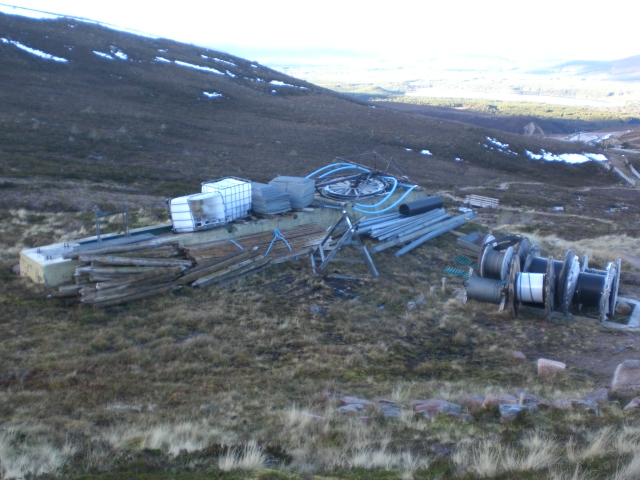
There is evidence that Natural Retreats have been undertaking some sort of tidy up at Cairngorm, which is welcome if not before time. The Shieling Rope Tow fencing has been completed. The section of the Carpark T-Bar fencing that had been taken down to allow a machine to move out of the uptrack has been nailed back on after lying on the ground for 3 months. Some of the spoil materials have been collected together and the place does look tidier.
Indeed Natural Retreats has claimed that some of the mess – such as that at the unofficial dump they created at the old Fiacaill T-bar base (photo above) would be cleared once the snows arrive. This, they have claimed, is because snow would reduce the impact of vehicles transporting redundant materials out. The trouble with this claim is not just that redundant materials such as the old chestnut fencing which is lying against the new snow fencing get buried as soon as it snows – which may explain why many redundant materials have been lying around since before last winter – its that Natural Retreats have been causing damage to vegetation elsewhere.
The Car Park T-Bar
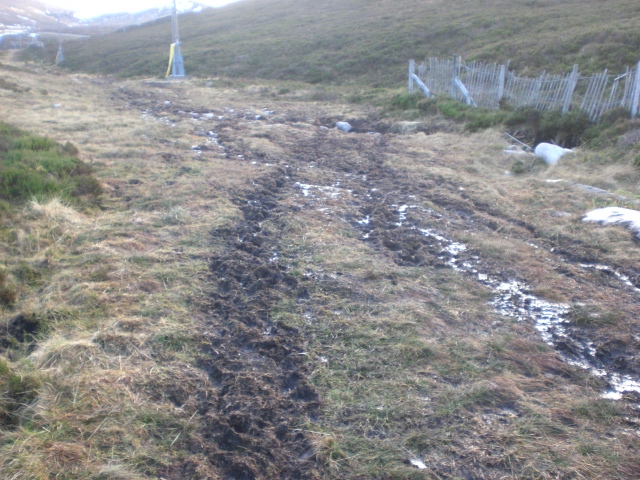
Parkswatch have previously featured vehicles driving by the Carpark T-bar uptrack and the impact of that is clearly evident. The vegetation has been seriously damaged and the ground is now being eroded by water.

Highland Council approved the laying of new cable along the Car Park T-bar – which clearly needed to be done – without planning permission as they regarded the works as “de minimis.” Its clear that the impact of vehicle use here – whether for follow up work on the cable laying or for other works – has not been “de minimis”.
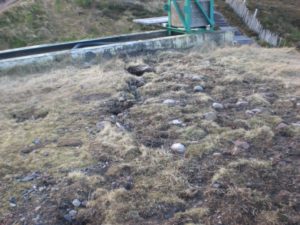

While the trench for the cabling by the Car Park lifties hut, which had been left open for something like six months (photo left) has now been filled in, the quality of the restoration has been extremely poor. You can still see a trench which will act as a drainage channel. The natural vegetation here had all been highly modified by the high levels of use but in order to help the ground recover and prevent erosion the trench should have been filled in months ago. The most recent good practice guidance all suggests that where trenches are required restoration should take place as the work goes along in order to reduce impacts. Maybe Natural Retreats has is a good explanation for the delay in this case? If so I would be happy to post this on parkswatch.
The Coire Cas T-bar gantry works
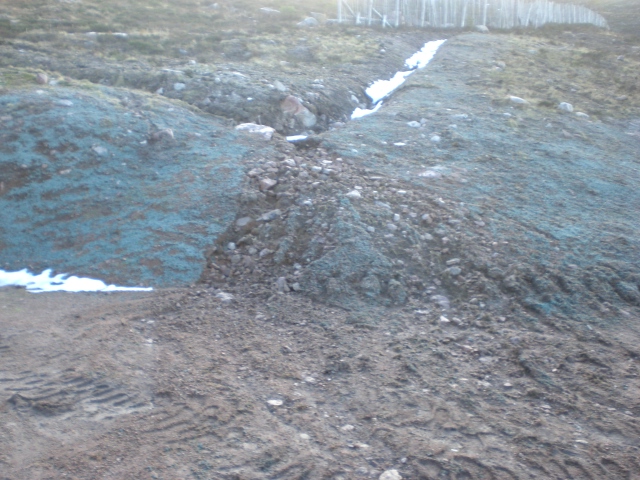
Highland Council agreed to emergency works on the Coire Cas Gantry in 2015 to make it safe for skiing and to “de minimis” groundworks and as a consequence waived the requirement for planning permission. They were informed this last time last year of concerns which they dismissed (see Letter re Coire Cas Gantry anonymised) and closed the case. I am afraid the recent photos show there has been a dereliction of public duty.
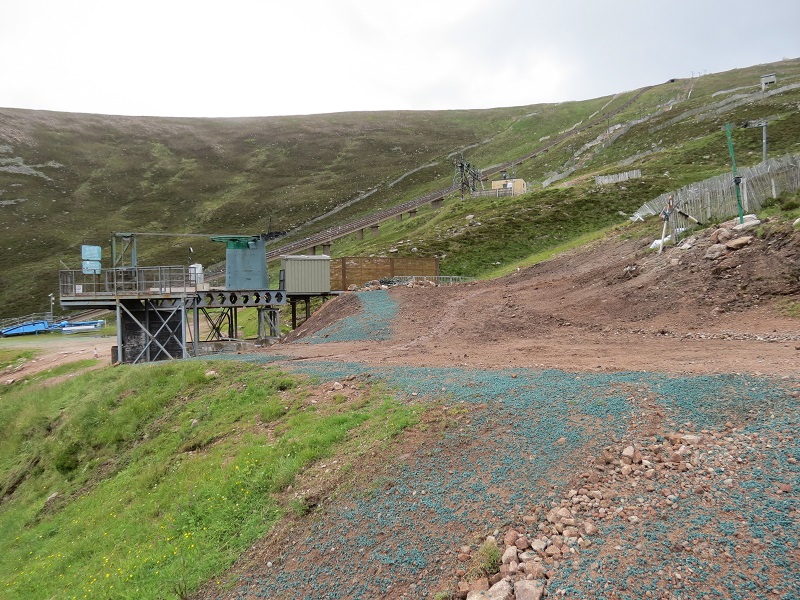
And this is how the lower slope adjacent to the gantry looks now
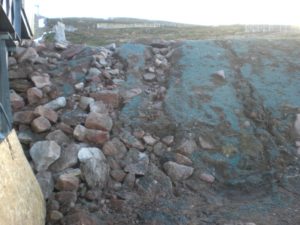
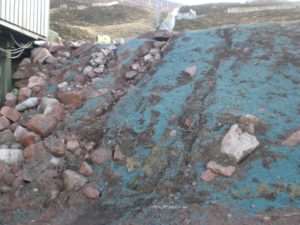
The topsoil is clearly washing out. This is partly a consequence of the steepness of this slope but also of a failure to store vegetation and re-seed the area in the Spring. Its fairly predictable that there will be further significant erosion during the rest of the winter and that the slope will become unstable – will the Natural Retreats solution be simply to scoop up more material from elswhere and dump it on the slope? Its time the CNPA talked to Highland Council and they agreed that all works should be required to meet certain standards and that this be enforced. If the only way to do this is to require planning permission whenever that is applicable, then that’s what our public authorities should do. All the evidence clearly shows that leaving Natural Retreats to supervise works continues to fail.
The Shieling Rope Tow area
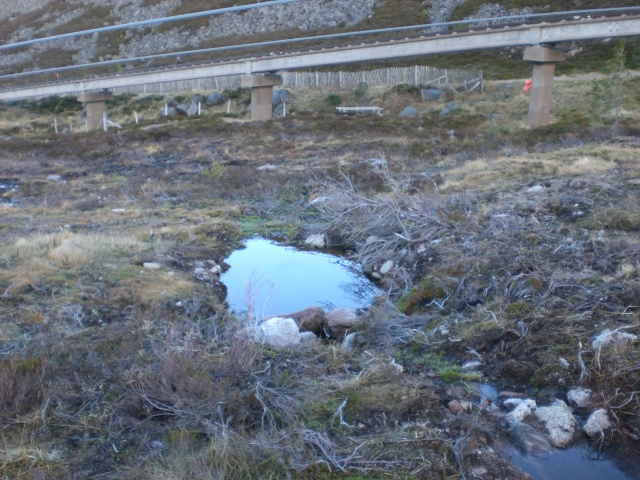
The places where Natural Retreats’ contractors scooped out vegetation with diggers – in order to “restore” the reprofiled Shieling rope tow slope – have now predictably filled up with water. In flood prevention terms this may not be a bad thing, as all the other works Natural Retreats has done has had the effect of increasing water run-off, but it has changed the ecology of slope. What’s more the efforts to try and minimise the impact of the funicular, by taking extreme care over grounds works, has simply been undone. All this work appears to have been funded by Highlands and Islands Enterprise and I am currently in dialogue with them about exactly what they funded and what if any of the damage has been paid for by Natural Retreats.

The unlawful track that Natural Retreats created by the Shieling rope tow is due to be considered by the CNPA planning committee at the end of January. While the seeding has partially established grass along the track, the blue pellets and stones in the foreground indicate that the top of the slope has washed away again. Its too steep and the drainage scoops are unlikely to solve the problem. They are likely to be seriously eroded by the end of the winter.

The cumulative impact of the destruction of vegetation and increase in water run-off caused by the Shieling Rope tow appears to be impacting on the path below it. The path is now extemely soggy and you can see how lower down its starting to form a burn. I trust that the CNPA consider these issues at Planning Committee and how this fits with the local area flood prevention plan.
